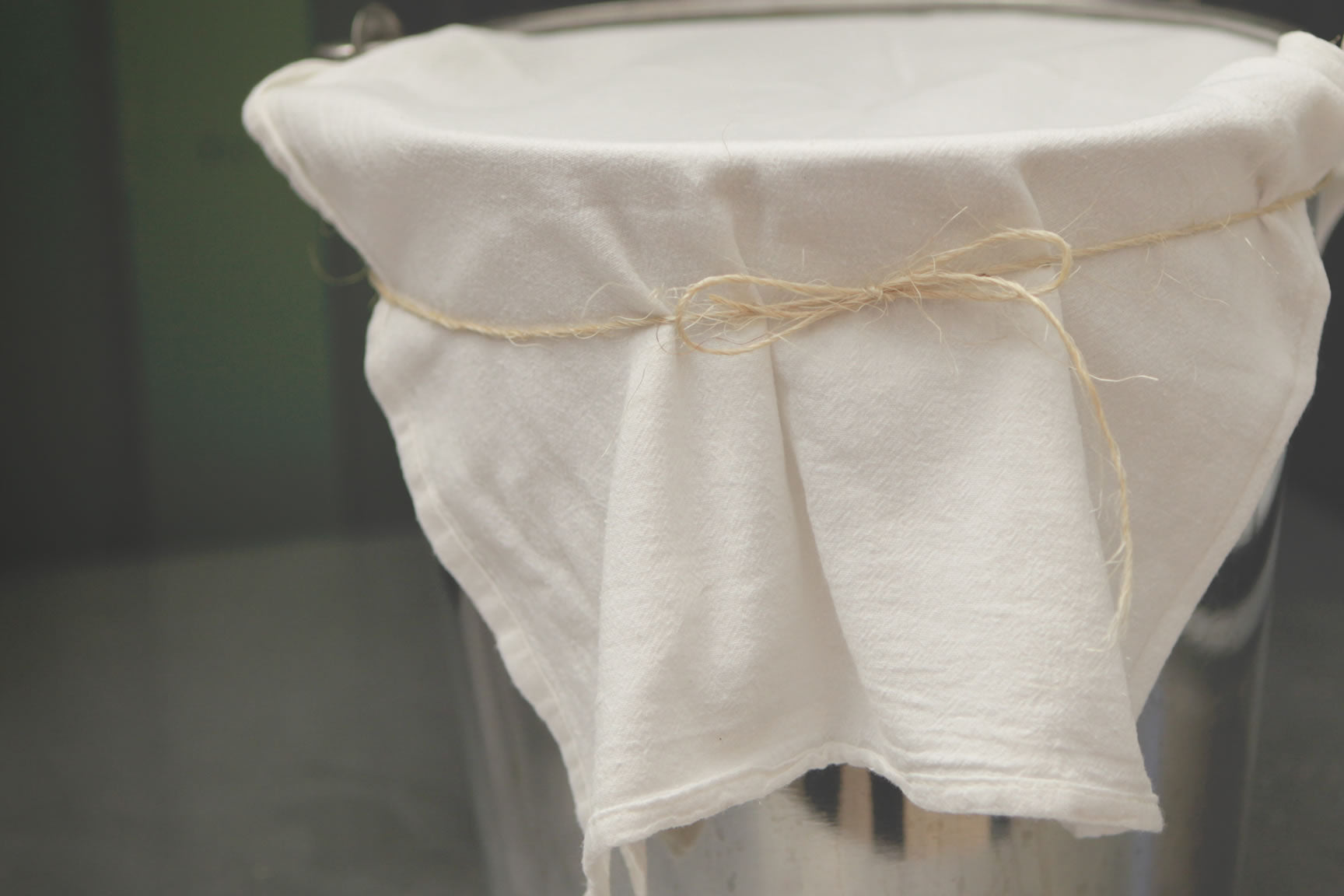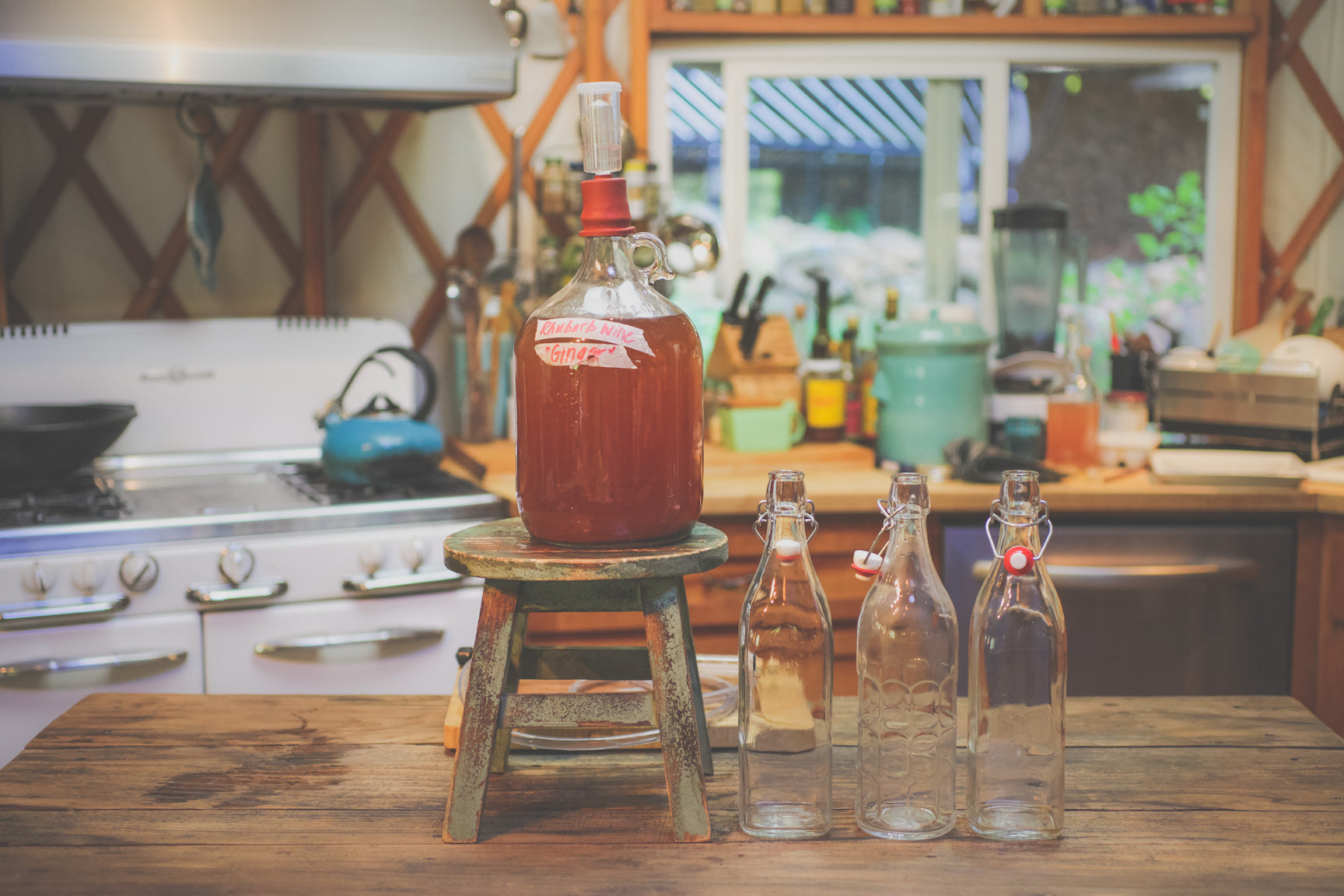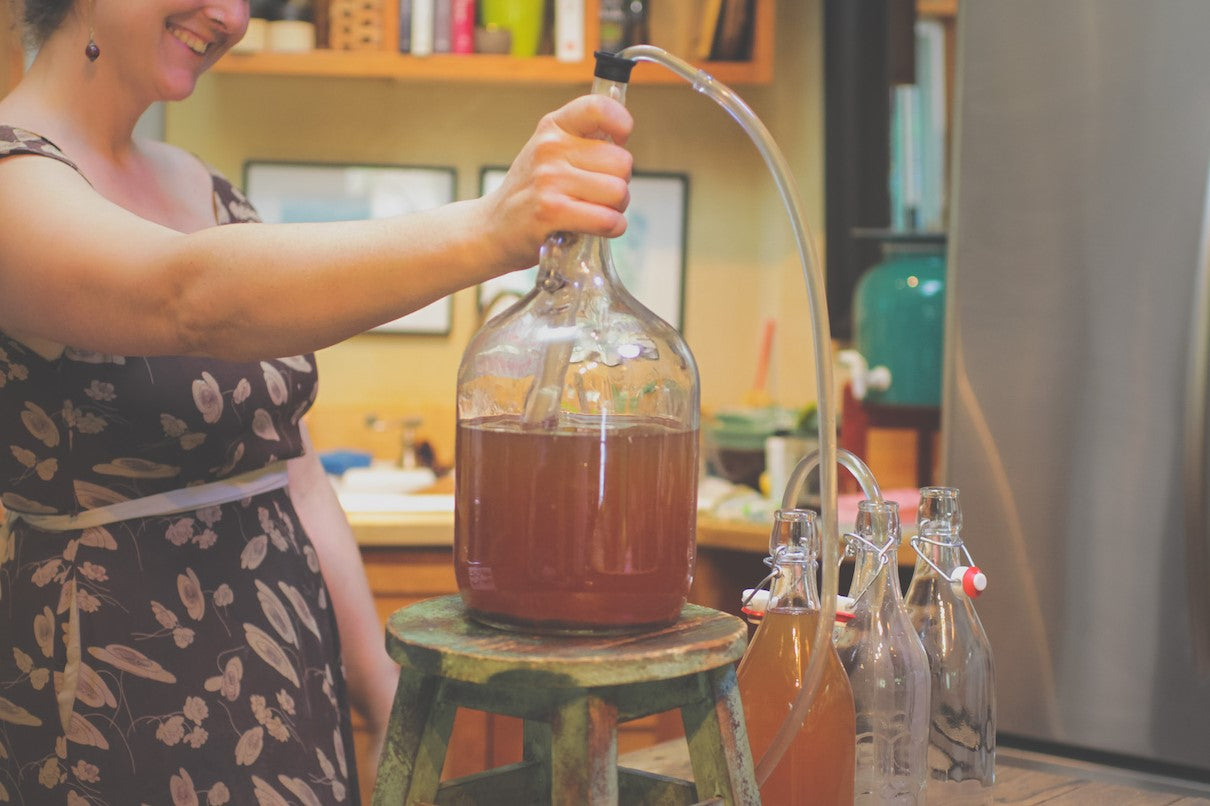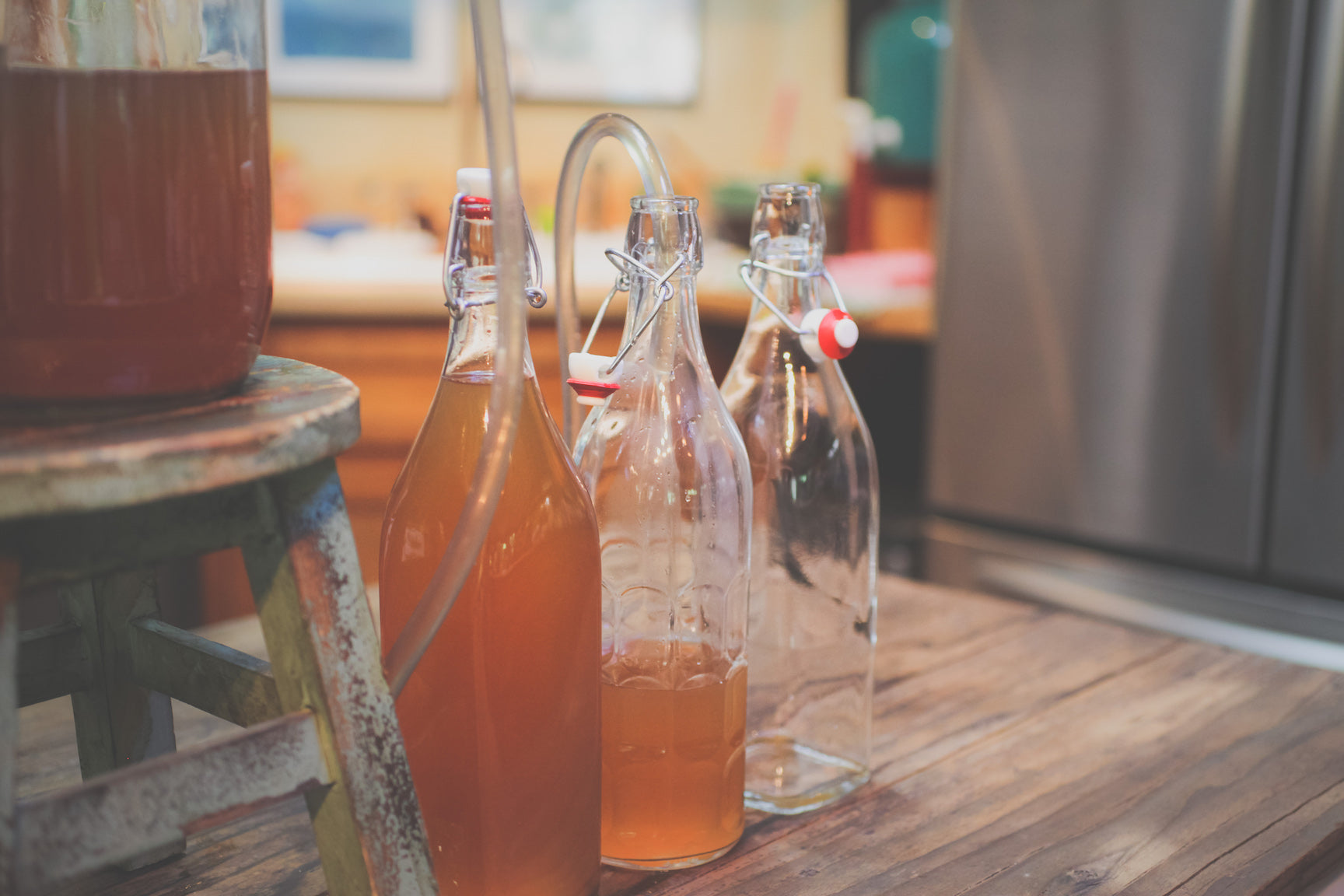- Continue Shopping
- Your Cart is Empty
Rhubarb Wine: 2 Recipes for a Spring Libation!

What You'll Need
Equipment
- 3-4 Gallon ceramic crock or stainless steel container
- Kraut Pounder
- Cheesecloth
- Twine or large rubberbands
- Mesh strainer
- 1 gallon glass jug
- 1 gallon glass jug musting cap
- airlock
- swing top bottles or bottles and caps
- racking cane
- Plastic tubing
Ingredients for Recipe #1
- 3 pounds Rhubarb, leaves removed
- 1 thick piece of fresh ginger
- 1 large lemon
- Organic sugar (1 1/2 cup per pint of liquid)
- Champagne yeast (optional)
- 1 gallon non-chlorinated water
Ingredients for Recipe #2
- 3 pounds Rhubarb, leaves removed
- 3 cups organic sugar
- 3 quarts non-cholrinated water for tea plus 3 quarts of non-chlorinated warm water
- Black tea (to brew in 3 quarts of water above)
- 1/4 lb raisins
- 1/4 lb of light honey
- 1 crushed Campden tablet
- 1 tsp yeast nutrient
- 1 teaspoon pectic enzyme
- 1 teaspoon of Champagne yeast
Those that have followed this journal for a while may remember our posting last year, where we tried two very different recipes for rhubarb wine. We had never made either before, but couldn’t resist the allure of the plant itself, wide green leaves and stems of brilliant crimson.
The idea was to make them both, and perhaps to decide which recipe we favored. Well, we have done it, and let them age for a full year now. The results, like the plant itself, are not easy to categorize. It would have been an easier article to write, if one was clearly the winner.
Which Recipe Won? No Clear Answer...
But although both wines were delicious in their own way, neither was quite what we expected it might be. After a few nights of springtime revelry, we feel qualified now to expound on the mysterious, wonderful world of rhubarb wine.
Recipe #1: Ginger
Before we dive into the step-by-step for each recipe, it makes sense to discuss what kind of wine you will be creating. The first wine is a recipe adapted from one found in Artisan Drinks, by Lindy Wildsmith. It uses a method of catching wild yeasts, not unlike a ginger bug, and so to keep my wines straight, I nicknamed this one Ginger. (You will see this label on the carboys in the pictures ahead.) ‘Ginger' contains a very high proportion of sugar, and the wine it eventually becomes is sweet and thick, with very little ginger flavor.
Recipe #2: Champagne
The second recipe has been nicknamed ‘Champagne’, because instead of wild yeasts, it calls for the addition of champagne yeast. This recipe comes to us from another favorite source of libation inspiration, called the Wine Maker’s Companion. Since it was a test run, we scaled their 5 gallon recipe down to suit a 1 gallon batch. This wine could not be more different from the first. It is a dry wine, not at all sweet, but still fairly high in alcohol, with the unmistakable flavor and aroma of rhubarb shining through. Although it was drier than we liked for sipping straight, the flavor and aroma were something special when blended into simple cocktails.
Com-pairing
Frankly, for sipping straight, we preferred these two wines blended together, at a ratio of 2 parts ‘Champagne’ to 1 part ‘Ginger.’ We also found that both were most enjoyable when blended into other drinks, where their complex and unexpected flavors shone through as notes in a cocktail. We especially loved them paired with a sparkling wine like Prosecco, or even with sparkling water and some elderflower syrup. To avoid headaches the next day, we were not able to test the theory, but we also felt that they would be excellent blended with either gin or vodka and a sparkling soda water. Obviously, further experimentation is necessary. But that’s the fun part!
The directions for making both recipes are below. If you want to follow along in real time here is a link to the daily log for the first two weeks of fermentation.
Directions
Rhubarb Wine #1: Use Ginger's Wild Yeasts to Start Fermentation!
This recipe is similar to a ginger bug, the ginger starter often used to make ginger beer. Ginger, like apples, is covered with wild yeasts. This recipe is adapted from Artisan Drinks, by Lindy Wildsmith. I've changed just a few details, but the bulk of it are hers. The recipe makes one gallon.
 1) Prepare your Ingredients
1) Prepare your Ingredients
Remove the leaves and wash 3 lbs of Rhubarb. Dice the rhubarb stems into 1/2"-1" chunks. Slice up a thick finger of ginger (skin can stay on). Juice 1 lemon and then dice it up, peel and all into 1/2"-1" chunks. 
2) Mash Your Ginger/Rhubarb "Bug"
Crush your rhubarb with a rolling pin or kraut pounder and place it into a ceramic crock or stainless steel container. Add your sliced ginger, lemon juice and diced lemon peel. Pour one gallon of boiling water over the top.
 Cover the container with cheesecloth. Secure the cheesecloth with rubber bands or twine tightly to keep it from falling into the mixture. Ferment this mixture for 10 days at around 60°-70°F. Stir it daily, to prevent mold from growing on the surface.
Cover the container with cheesecloth. Secure the cheesecloth with rubber bands or twine tightly to keep it from falling into the mixture. Ferment this mixture for 10 days at around 60°-70°F. Stir it daily, to prevent mold from growing on the surface.
 3) Strain and Add Yeast if Needed
3) Strain and Add Yeast if Needed
After 10 days, strain the fermented Ginger/Rhubarb juices into another deep bowl or pan using a jelly bag or fine mesh strainer, discarding the solids. Add 1 1/2 cups of sugar for every pint of juice obtained, and stir until dissolved.

Sanitize your 1 gallon jug, musting cap and airlock. Transfer the juice to the 1 gallon jug. Add a 1 gallon jug musting cap and airlock filled with water or sanitizer to the jug opening. Leave this to ferment for 10 days at 60°-70°F.
If after 3 days, you do not see any bubbling activity, you probably need to add some yeast. A teaspoon of Champagne yeast should do the trick.
4) Store for 6-12 Months
Keep an eye on the airlock. The wine is ready when an airlock watched for 5 minutes produces no bubbles. Trade the airlock quickly for a sanitized rubber stopper, which will maintain the anaerobic environment in the jug, without having to refill the airlock over the long months of storage. Store 6-12 months in a cool, dark place.
5) Bottle and enjoy
After 6-12 months, siphon the wine into sterilized bottles and enjoy at will! Follow our bottling and sanitation tips for cider or beer here.


Directions
Rhubarb wine #2: Champagne
This recipe is adapted from one in The Home Winemaker's Companion, by Gene Spaziani and Ed Halloran. Again, some changes have been made, but the seed of the recipe came from their book.
 1) Prepare your Ingredients
1) Prepare your Ingredients
Remove the leaves and wash 3 lbs of Rhubarb. Dice into 1/2"-1" chunks and place it into a ceramic crock.
 2) Crush Rhubarb and Ferment for 1 day
2) Crush Rhubarb and Ferment for 1 day
Pour 3 cups of sugar over the rhubarb, then crush the rhubarb and the sugar together using a rolling pin or kraut pounder. Let this mixture stand, covered with cheesecloth, for one day. Secure the cheesecloth with rubberbands tightly to keep it from falling into the mixture. 
3) Add Additional Ingredients
The next day, brew a quart of strong black tea, and pour it over the rhubarb and sugar mixture. Add 1/4 lb raisins, 1/4 lb of light honey, and 1 crushed Campden tablet, then cover with 3 quarts of warm water. If you prefer not to use tea, a 1/4 tsp of grape tannin may be used instead. Secure the cheesecloth with rubber bands tightly to keep it from falling into the mixture.
4) Add Yeast
The next day, add 1 tsp yeast nutrient, 1 tsp pectic enzyme, and a teaspoon of Champagne yeast. Secure the cheesecloth with rubber bands tightly to keep it from falling into the mixture. Allow this mixture to ferment for 2 days.
5) Strain
Strain out the solids with a jelly bag or fine mesh strainer, discarding the solids. Remove as much of the juice as possible. Return the liquid to your crock. Secure the cheesecloth with rubber bands tightly to keep it from falling into the mixture. Ferment for 3 or 4 days.
6) Transfer to Glass Jug for Final Fermentation

Sanitize your 1 gallon jug, musting cap and airlock. Pour the liquid through a plastic funnel into a 1 gallon glass jug. Fill your airlock with water or sanitizer and add to your jug.
7) Rack to Clarify
Allow this mixture to ferment in a cool, dark place. After a month, siphon the wine into a new clean jug, leaving the sediment behind. Top off with water to fill the carboy, and leave it to ferment again.
8) Final Fermentation


Rack again in 3 months. When the wine is clear, bottle it. Taste the wine 6 months after bottling. Follow our bottling and sanitation tips for cider or beer here.
Over to You...
It’s part of our mission here at Mountain Feed to help you make delicious, sustainable, homemade food more often. Stop by and say hello on Facebook, Twitter, Instagram or Pinterest. Or, as always, you can do it the old fashioned way and come by the store to speak with one of our in-house experts.
Keeping a great journal leads to delicious results! Get inspired by new recipes, expert articles and homemade food adventures in our Monthly Journal.

 1) Prepare your Ingredients
1) Prepare your Ingredients 3) Strain and Add Yeast if Needed
3) Strain and Add Yeast if Needed